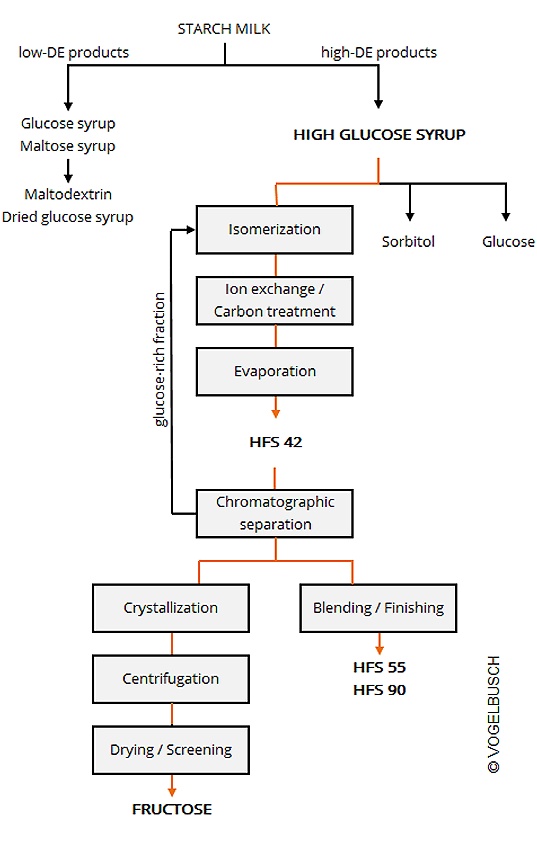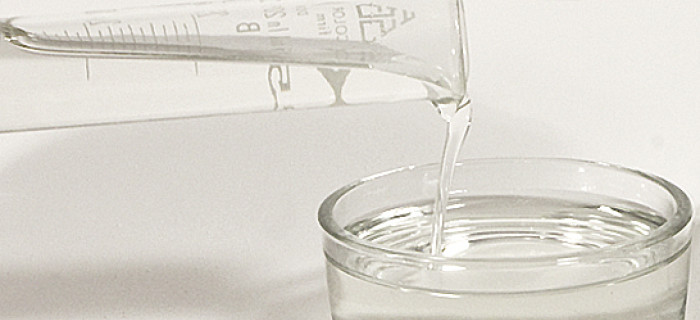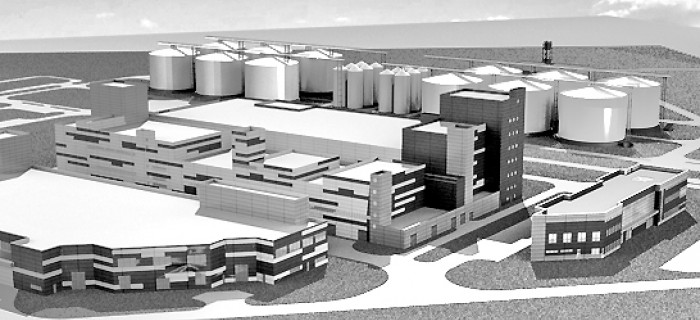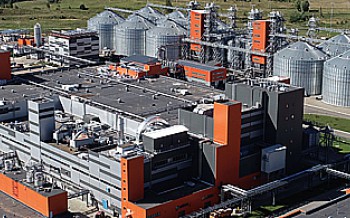Vogelbusch HFS Technology
High fructose syrup (HFS, or HFCS for high fructose corn syrup) in specified concentrations has a caloric value and sweetness similar to sucrose (table sugar). As a natural sweetener it is popular as liquid alternative to sucrose in the soft drinks and confectionery industry.
High glucose syrup, which is the feedstock for HFS production, is obtained from common starch plants such as corn, wheat, rice and cassava.
Starting out from starch milk, we design and supply production lines covering all process steps from the starch conversion through to final enrichment of the syrup.




